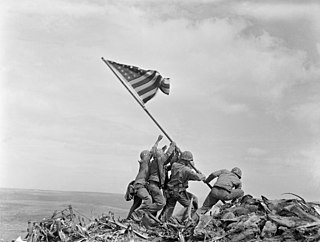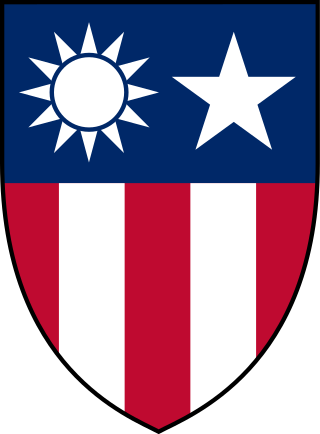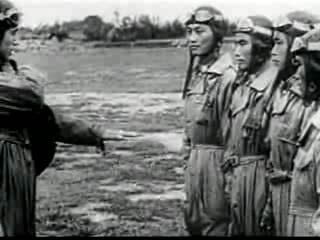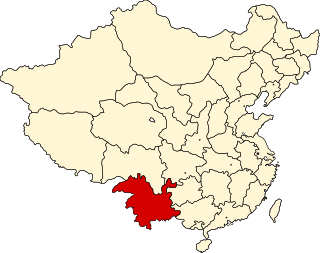
The Second Sino-Japanese War, also known as the Second China–Japan War and the Chinese War of Resistance against Japanese Aggression, was fought between the Republic of China and the Empire of Japan from 1937 to 1945 as part of World War II. This total war between China and the Empire of Japan is often regarded as the beginning of World War II in Asia, although some scholars consider the European War and the Pacific War to be entirely separate, albeit concurrent. It was the largest Asian war in the 20th century and has been described as "the Asian Holocaust", in reference to the scale of Imperial Japan's war crimes against Chinese civilians. After the Japanese attacks on Malaya and Pearl Harbor in 1941, the war merged with other conflicts which are generally categorized under the China Burma India Theater of World War II by the Western allies.

The Pacific War, sometimes called the Asia–Pacific War, was the theater of World War II that was fought in eastern Asia, the Pacific Ocean, the Indian Ocean, and Oceania. It was geographically the largest theater of the war, including the vast Pacific Ocean theater, the South West Pacific theater, the Second Sino-Japanese War, and the Soviet–Japanese War.

China Burma India Theater (CBI) was the United States military designation during World War II for the China and Southeast Asian or India–Burma (IBT) theaters. Operational command of Allied forces in the CBI was officially the responsibility of the Supreme Commanders for South East Asia or China. In practice, U.S. forces were usually overseen by General Joseph Stilwell, the Deputy Allied Commander in China; the term "CBI" was significant in logistical, material and personnel matters; it was and is commonly used within the US for these theaters.

Operation Ichi-Go was a campaign of a series of major battles between the Imperial Japanese Army forces and the National Revolutionary Army of the Republic of China, fought from April to December 1944. It consisted of three separate battles in the Chinese provinces of Henan, Hunan and Guangxi.

The proposed Japanese invasion of Sichuan was the Imperial Japanese Army's failed plan to destroy the Republic of China during the Second Sino-Japanese War. It was to be a stepping stone for the Empire of Japan's final control of the Chinese mainland.
The Battle of West Hunan, also known as the Battle of Xuefeng Mountains and the Zhijiang Campaign, was the Japanese invasion of west Hunan and the subsequent Allied counterattack that occurred between 6 April and 7 June 1945, during the last months of the Second Sino-Japanese War. Japanese strategic aims for this campaign were to seize Chinese airfields and secure railroads in West Hunan, and to achieve a decisive victory that their depleted land forces needed.

Masakazu Kawabe was a general in the Imperial Japanese Army. He held important commands in the Imperial Japanese Army during the Second Sino-Japanese War, and during World War II in the Burma Campaign and defense of the Japanese homeland late in the war. He was also the elder brother of General Torashirō Kawabe.
This article deals with the chronology and development of Chinese armoured forces from 1927 to 1945.

The Second Sino-Japanese War began on 7 July 1937 with the Marco Polo Bridge Incident in the Republic of China and is often regarded as the start of World War II as full-scale warfare erupted with the Battle of Shanghai, and ending when the Empire of Japan surrendered to the Allies in August 1945. The Chinese Air Force faced the Imperial Japanese Army and Navy Air Forces and engaged them in many aerial interceptions, including the interception of massed terror-bombing strikes on civilian targets, attacking on each other's ground forces and military assets in all manners of air-interdiction and close-air support; these battles in the Chinese skies were the largest air battles fought since World War I, and featured the first-ever extensive and prolonged deployment of aircraft carrier fleets launching preemptive strikes in support of expeditionary and occupational forces, and demonstrated the technological shift from the latest biplane fighter designs to the modern monoplane fighter designs on both sides of the conflict.

Long Yun was governor and warlord of the Chinese province of Yunnan from 1927 to October 1945, when he was overthrown in a coup by Du Yuming under the order of Chiang Kai-shek.
The 1939–1940 Winter Offensive was one of the major engagements between the National Revolutionary Army and Imperial Japanese Army during the Second Sino-Japanese War, in which Chinese forces launched their first major counter-offensive on multiple fronts. Although this offensive failed to achieve its original objectives, some studies have shown that it came as a heavy blow to the Japanese forces, as well as a massive shock to the Japanese military command, which did not expect the Chinese forces to be able to launch an offensive operation on such a large scale.

Battle of Northern Burma and Western Yunnan was the name of the Chinese campaign with their allies in the 1943–45 Burma Campaign. The campaign ended in an Allied victory.

The 13th Division was an infantry division in the Imperial Japanese Army. Its tsūshōgō code name was the Mirror Division, and its military symbol was 13D. The 13th Division was one of four new infantry divisions raised by the Imperial Japanese Army (IJA) in the closing stages of the Russo-Japanese War 1 April 1905, after it turned out what the entire IJA was committed to combat in Manchuria, leaving not a single division to guard the Japanese home islands from attack.

The 2nd Division was an infantry division in the Imperial Japanese Army. Its tsūshōgō was Courageous Division.

The Allied leaders of World War II listed below comprise the important political and military figures who fought for or supported the Allies during World War II. Engaged in total war, they had to adapt to new types of modern warfare, on the military, psychological and economic fronts.

Yunnan is a de jure province in the Republic of China according to the ROC law, as the ROC government formally claims to be the legitimate government of the whole China. It was one of the 22 provinces set up during the Qing dynasty. As one of the 6 provinces in South China, the territory it administers was slightly larger than the present-day Yunnan.
This page is based on this
Wikipedia article Text is available under the
CC BY-SA 4.0 license; additional terms may apply.
Images, videos and audio are available under their respective licenses.












